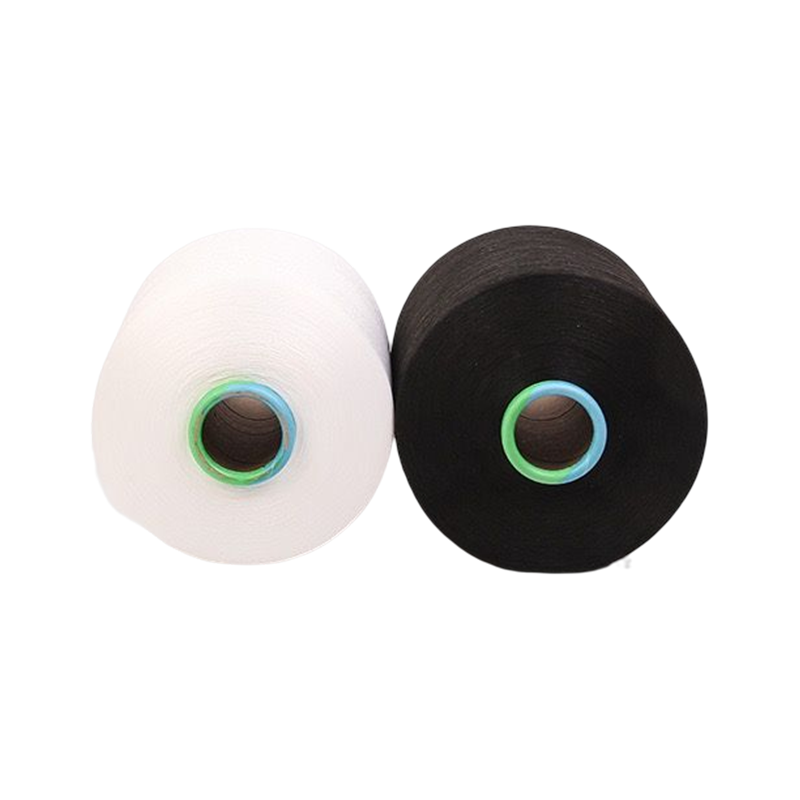Polyester DTY (Draw Textured Yarn) is a critical synthetic fiber used across various industries due to its elasticity, durability, and versatility.
1. Production Process of Polyester DTY
1.1 Raw Material Preparation (Polymerization and POY Formation)
The production of Polyester DTY begins with the polymerization of purified terephthalic acid (PTA) and monoethylene glycol (MEG) to form polyethylene terephthalate (PET). This molten PET is extruded through spinnerets in a melt-spinning process to produce Partially Oriented Yarn (POY).
Polymerization Process:
PTA and MEG undergo esterification and polycondensation to form PET chips.
The molten PET is then filtered and extruded through spinnerets to form continuous filaments.
POY Characteristics:
POY has low crystallinity and moderate strength (~2.0–3.0 g/denier).
It is wound at high speeds (3,000–4,000 m/min) to maintain partial molecular orientation.
1.2 Draw Texturing (False-Twist Texturing Process)
The POY is then processed in a draw-texturing machine (DTY machine) to enhance elasticity and bulkiness.
Key Steps in DTY Production:
Preheating Zone: The POY is heated to soften the polymer (~180–220°C).
Drawing Zone: The yarn is stretched (draw ratio ~1.5–2.0) to increase tenacity.
False-Twist Texturing: A twisting mechanism (friction discs or belt twisters) introduces crimps, giving DTY its elasticity.
Heat Setting: The crimped structure is stabilized through controlled cooling.
Intermingling (Optional): Air jets entangle filaments for better cohesion.
Quality Control Parameters:
Denier uniformity (e.g., 75D, 150D).
Elongation at break (20–50%).
Crimp contraction (measures elasticity).
2. Physical and Chemical Properties of Polyester DTY
2.1 Physical Properties
Polyester DTY exhibits several key physical characteristics that make it suitable for various applications:
Elasticity & Bulkiness:
Due to crimping, DTY has high elongation (20–50%), making it ideal for stretch fabrics.
The bulk density is lower than FDY, providing a softer feel.
Tenacity & Durability:
Tensile strength ranges from 3.5–6.0 g/denier, balancing flexibility and strength.
Abrasion resistance is superior to natural fibers like cotton.
Thermal Properties:
Melting point: 250–260°C.
Low thermal shrinkage (<5% at 180°C), making it stable during heat setting.
Moisture Absorption:
Inherently hydrophobic (~0.4% moisture regain).
Modified versions (microfiber DTY) improve moisture-wicking properties.
2.2 Chemical Properties
Polyester DTY is chemically stable but has specific reactivity traits:
Acid & Alkali Resistance:
Resistant to weak acids but degrades in strong alkalis (e.g., NaOH at high temperatures).
UV & Light Resistance:
Good UV stability, but prolonged exposure causes yellowing (additives improve resistance).
Dyeability:
Requires disperse dyes at high temperatures (130°C) for deep shades.
Cationic dyeable polyester (CDP) variants allow brighter colors.
3. Classification and Specifications of Polyester DTY
3.1 Classification by Luster
Bright (Shiny) DTY:
High reflectivity, used in fashion fabrics and decorative textiles.
Semi-Dull DTY:
Moderate sheen, common in everyday apparel.
Full-Dull DTY:
Matte finish, preferred for premium and technical textiles.
3.2 Classification by Filament Fineness
Microfiber DTY (≤0.5 denier per filament):
Ultra-soft, mimics silk in lingerie and luxury apparel.
Regular DTY (1–3 denier per filament):
Standard for sportswear, upholstery, and hosiery.
Coarse DTY (>3 denier per filament):
Used in industrial textiles, ropes, and heavy-duty fabrics.
3.3 Classification by Cross-Sectional Shape
Round Cross-Section:
Standard, cost-effective, used in most apparel.
Triangular Cross-Section:
Enhances sparkle, used in decorative fabrics.
Hollow Cross-Section:
Lightweight, provides insulation (used in thermal wear).
3.4 Functional Variants of DTY
Antimicrobial DTY:
Incorporated with silver ions for medical textiles.
Flame-Retardant DTY:
Used in protective clothing and automotive interiors.
Elastomeric DTY:
Blended with spandex for high-stretch activewear.
4. Application Areas of Polyester DTY
4.1 Apparel Industry
Sportswear:
Moisture-wicking DTY blends (e.g., polyester-spandex for leggings).
Lingerie & Underwear:
Soft microfiber DTY for comfort and stretch.
Hosiery & Socks:
Fine-denier DTY provides elasticity and durability.
4.2 Home Textiles
Bedding & Linens:
Wrinkle-resistant DTY for duvet covers and pillowcases.
Curtains & Upholstery:
UV-resistant DTY for long-lasting color retention.
4.3 Technical & Industrial Textiles
Automotive Fabrics:
Abrasion-resistant DTY for car seats and interiors.
Medical Textiles:
Antimicrobial DTY for surgical gowns and drapes.
Geotextiles:
High-tenacity DTY for erosion control fabrics.

 English
English
 Español
Español



-2.png)
-2.png)
-3.png)
